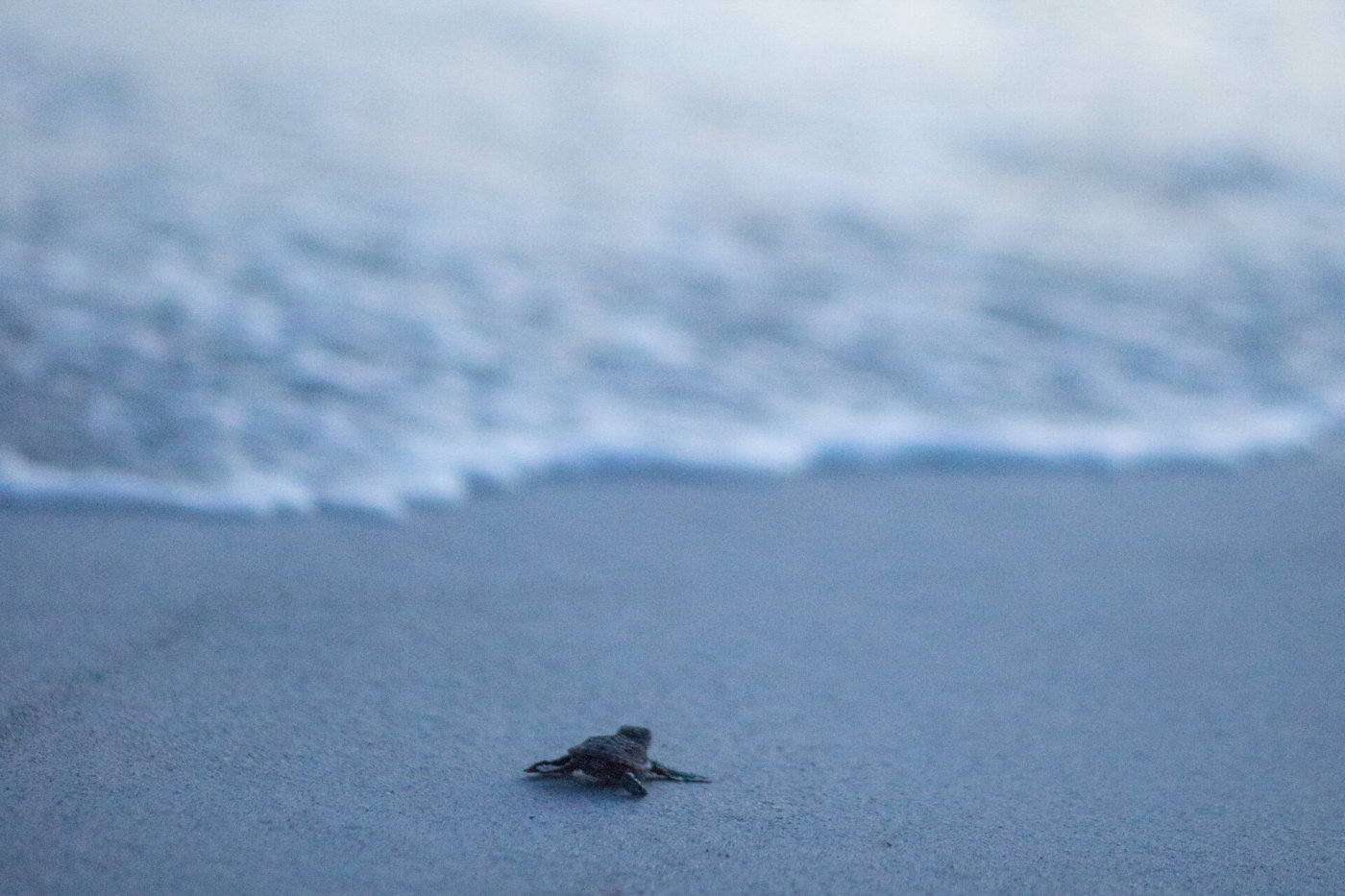By Sarah Sekula, published in USA TODAY // photos by Marc Ellis and Mote
SIESTA KEY, Florida — Visit Siesta Key on Florida’s Gulf Coast this time of year and the scene will be exactly as you’d expect: a mixture of teens spring breaking on the famous silky, white sand and snowbirds combing the shores for shells. It’s a calming respite for many.
Soon enough, another annual visitor will show up, also seeking refuge. Once May rolls around, mama sea turtles will make their way to Sarasota County for nesting season. They arrive quietly in the wee hours, so chances are, you will never even notice them.
That said, it may come as a surprise that Sarasota County has the highest density of turtle nests on the Gulf Coast, hosting up to 6,000 nests a year, and the east coast of Florida hosts up to 40,000. Even more impressive, Florida’s beaches are the largest aggregation of nesting loggerheads in the world.
Once the hatchlings emerge from the nest, it is a sight to see. The sand begins to move up and down like bubbles in a boiling pot of water. Tiny heads and flippers break the surface by the dozens and quite suddenly there are loads of babies bumbling about, each no bigger than a child’s palm. Within a few minutes to a few hours, one tenacious hatchling starts trucking it to the sea. The rest follow.
“You can’t even count them all as they pour from the nest and make their way to the ocean without a care in the world, just the instinct to follow the light,” says Kristen Mazzarella, a biologist with Mote Marine Laboratory and Aquarium.
“They traverse over lots of obstacles from seaweed to holes in the sand and just keep going until they hit the water. It sometimes takes them a moment to realize that they need to switch to swimming, but after a few tosses by the waves, they swim out and have the whole ocean to explore.”
It’s something few get to witness. But for Mazzarella, her odds are better than the average beach-goer. For starters, during Sarasota County’s turtle nesting season she walks the beach five days a week, eyes peeled for turtle tracks. As senior biologist of Mote’s Sea Turtle Conservation and Research Program part of her job is to monitor nesting turtles within the 35-mile coastline.
This may have you thinking, well, how do I score my own turtle time? Answer is: That can be tricky and it is crucial to follow the rules to avoid heavy fines and make sure the turtles are not disturbed.
“We do not encourage people to be on the beach at night due to the disturbance they can cause to mother turtles, nests and hatchlings,” Mazzarella says. “Even the best intentioned people can accidentally startle a mother turtle they can’t see in the distance or disorient a hatchling with their cell phone.”
Instead, sign up for a turtle walk, so you can tag along with a scientist. Longboat Key Turtle Watch is one such group. And there are loads of others across the Sunshine State hosting public-permitted walks during the nesting and hatching season from May to October. Or go a step further and apply to become a citizen scientist by applying for a marine turtle permit. If approved, you will help conduct nesting surveys and educational programs.
Follow the rules
When it comes to turtle viewing, experts stress the fact that you should never use lights on the beach at night as they can disrupt nesting turtles and disorient hatchlings from making a beeline to the water. Any distractions could result in them getting plucked up by a predator or simply just tire them out. All their energy needs to be used to get those tiny flippers to the sea so they can feed for the first time.
Sadly, only about one in 1,000 turtles make it to adulthood. Hatchlings are bite-size snacks for crabs, birds and fish. Not to mention, the ocean debris, artificial lighting and oil spills they may encounter along the way.
Likewise, all five Florida species—green, leatherback, hawksbill, and Kemp’s ridley turtles—are considered endangered or threatened. This means it’s illegal to harm, harass, or kill any sea turtles, their eggs or hatchlings.
“We share this world with them and should keep protecting them for our future generations to enjoy,” says Mazzarella.
If you go:
There are plenty of permitted turtle walks across the Sunshine State, and if you’re lucky you may see turtles nesting or hatchlings scrambling to the sea. Be sure to book early because they tend to fill up quickly. Visit the Florida Fish and Wildlife Conservation Commission website for a list of public permitted turtle watches: myfwc.com/education/wildlife/sea-turtle/where-to-view/
Ways to help:
—Join a beach cleanup or lead your own cleanup.
—Make sure not to leave fishing line on the beach.
—Never feed sea turtles.
—Adopt a sea turtle through the Sea Turtle Conservancy.
—Be part of the Sea Turtle Survival League by calling 1-800-678-7853.
—Turn off the lights. The lights can confuse sea turtles during mating season.
—If you see hatchlings going in any direction other than the sea, call the Florida Fish and Wildlife Conservation Commission Division of Law Enforcement at 1-888-404-FWCC.


